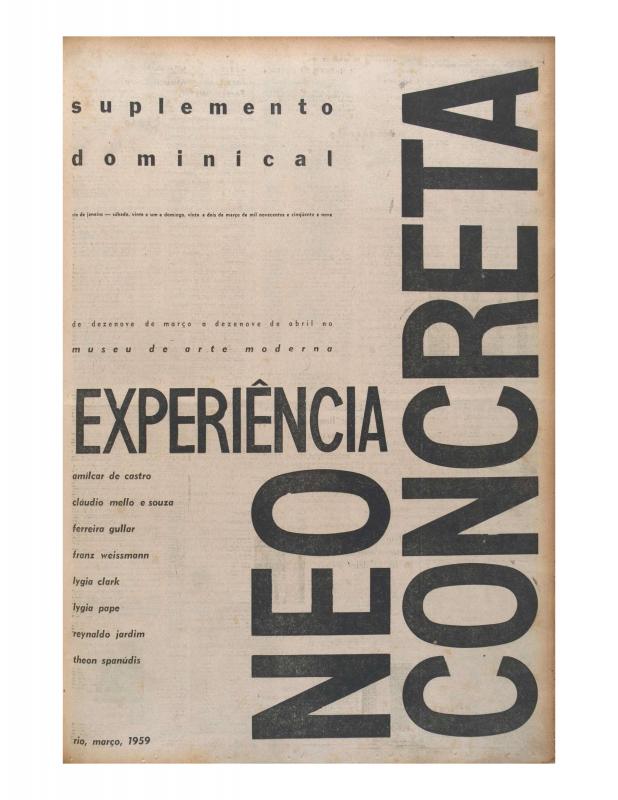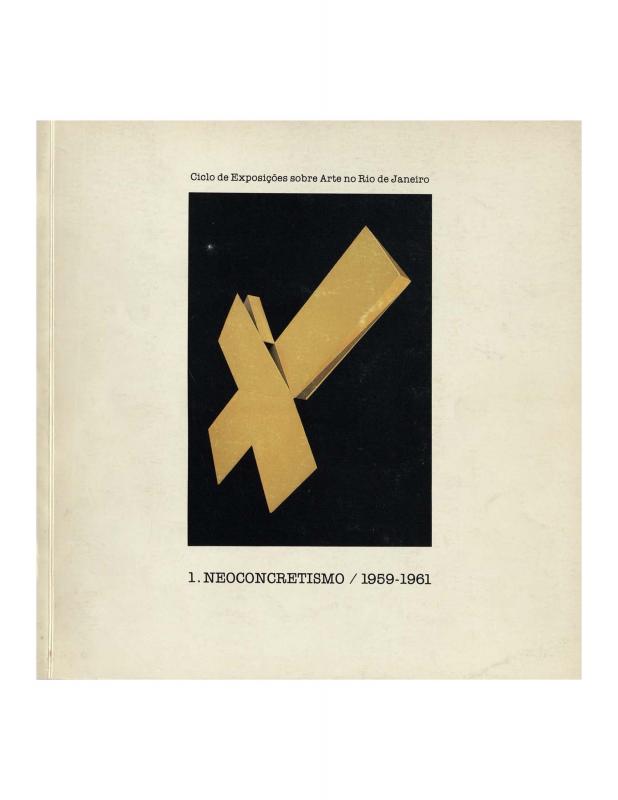In this essay, Ferreira Gullar articulates the position of the so-called Neoconcrete artists of Rio de Janeiro by tracing a shared history and points of divergence with the Concrete art movement. For Gullar, Concrete art begins in Brazil with the critic Mário Pedrosa who questioned “the more or less official Brazilian art, and paved the way for a renewal of our visual vocabulary.” Early artists to take up his call, such as Ivan Serpa to Almir Mavignier, had “decisive importance” to younger artists who encountered their work at the I Bienal de São Paulo in 1951. As disciples of Concretism formed groups in São Paulo and Rio de Janeiro, Gullar notes that “the Concrete artists of Rio, although they were always in contact with one another, gave themselves to intuitive and differentiated inquiry, while those of São Paulo, from the beginning, tended toward a dogmatic position, culminating in a kind of systematization of processes and expressive values.” The differences between the groups were evident at the I Exposição Nacional de Arte Concreta (1956–57), and continued to grow.
Gullar goes on to compare the theoretical positions of the Concrete group, as defined by Waldemar Cordeiro, with what would be called the Neoconcrete group, as defined by himself. The defining characteristic of the Concrete artists, he writes, is a rational, “mechanistic” approach that avoids “experiential contamination”—“it is a purely mental art.” For Gullar, such works exploit “the geometrical possibilities of the eye,” but lack “any transcendent meaning,” which is the point of divergence between the groups. Neoconcretism, as exemplified by “the Paulista poets” Gullar discusses, thus sought new ways “to express the complex contemporary reality” beyond the logics of language. The Neoconcrete, he writes, “born of a need to express… the complex reality of modern man, denies the validity of scientific and positivist attitudes in art.” Expanding on this “a-dogmatic” search for direct, phenomenological modes of perception, he concludes that the defining characteristic of Neoconcretism is “to make expressive the geometric vocabulary of concrete art.”









